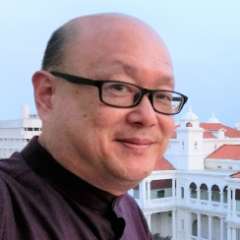In March this year, the Singapore Symphony Orchestra (SSO) named Finnish conductor Hannu Lintu its fourth Music Director, succeeding Hans Graf in the 2026-2027 season. This was Lintu’s first concert as Music Director-designate, confirming all the good notices garnered as a guest conductor in 2017 and 2018, besides providing an indication of things to come.

Opening the evening was Joseph Haydn’s Missa in Angustiis (Hob XXII:11, or Mass for Troubled Times) in D minor, better known as his Nelson Mass. Its relationship with Britain’s greatest naval commander is tenuous other than it was composed in 1798, when Europe was in Napoleonic turmoil. The gloom had however lifted somewhat at its Eisenstadt premiere, with the news of Admiral Horatio Nelson vanquishing the French in the Battle of the Nile. Two years later, Nelson and Lady Hamilton personally met with Haydn at Esterhazy and might have heard the mass performed then.
In the true spirit of sturm und drang, Lintu and his charges made no concessions for polite classical tradition and went for broke. Kyrie was an embattled cry for mercy, with the Singapore Symphony Chorus and Youth Choir (directed by Eudenice Palaruan) in full voice and soprano Hera Hyesang Park leading the plaints. Of the soloists, she had the choicest parts, for which she never held back. Bass-baritone Edward Grint in Qui tollis peccata mundi of Gloria lent a lyrical contrast. The quartet of soloists was completed by mezzo-soprano Virginie Verrez and tenor Elgan Llŷr Thomas, who had less significant roles but contributed well to the ensemble. The near 140-strong chorus sang in all movements, making big impacts in the fugal section of Gloria and later at the close of Credo. Entries were precise and consonants well enunciated, while the calmer Sanctus and Benedictus provided much needed contrast. Agnus Dei, led by mezzo-soprano, transitioned to a joyous choral Dona nobis pacem in D major which closed the mass in a celebratory high. Desperate times called for an appropriate response, and Haydn duly delivered.
It was astute for Lintu to showcase Gustav Mahler’s most retiring symphony, the Fourth, as his calling card. Away from the earth-shaking exploits of the first three symphonies, the Fourth oozed congeniality, almost angst free in countenance. Its gentle, bucolic opening movement radiated sunshine, the sheer lack of ostentation gave cause for Lintu’s ability to craft much nuance from the playing. Strings were smooth as silk, and later as the music darkened in intensity, the woodwinds and brass crept into action, culminating in the solo trumpet’s forewarning of the Fifth Symphony’s funeral march to come.
The second movement was distinguished by concertmaster Kevin Lin playing a second violin tuned to a tone higher, representing Brother Death fiddling with another typical touch of Mahlerian macabre. The slow movement (Ruhevoll) was a portrait of respite and restraint, building to a climax before ushering the finale’s Wunderhorn song Das himmlische Leben (The Heavenly Life). Soprano Park returned, now childlike and guileless, extolling an idyllic afterlife of scenic beauty, happy feelings and gustatory delights which stopped short of vegetarianism. There was to be no noisy or triumphant close, but Lintu had made his mark in the most musical way possible. There is a popular phrase in Malay, Singapore’s national language, “Akan datang” which means “more to come”, so watch this space.


